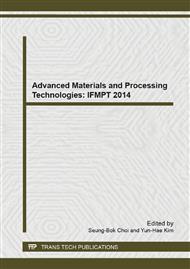p.123
p.130
p.134
p.141
p.146
p.150
p.154
p.160
p.167
Preparation and Properties of Organosilicon-Modified Acrylate Resin
Abstract:
Organosilicon-modified acrylate resin was successfully prepared by solution polymerization and the effect of content of silica sol and silane coupling agent (KH570) on the resistance to water, acid, alkali and aging, the polymerization mechanism, structure were studied,respectively. The results showed that: compared with the properties of resistance to water, acid, alkali and aging of pure acrylate resin, to some extent, those of organosilicon-modified acrylate resin had been improved a lot. The properties of resistance to water, acid, alkali and aging increased at first and then decreased with the increase of the content of organosilicon. Especially, the comprehensive performance of composite resin was relatively excellent when the content of silica sol and KH570 was 5% and 5.1%, respectively.
Info:
Periodical:
Pages:
146-149
Citation:
Online since:
February 2014
Authors:
Price:
Сopyright:
© 2014 Trans Tech Publications Ltd. All Rights Reserved
Share:
Citation:


